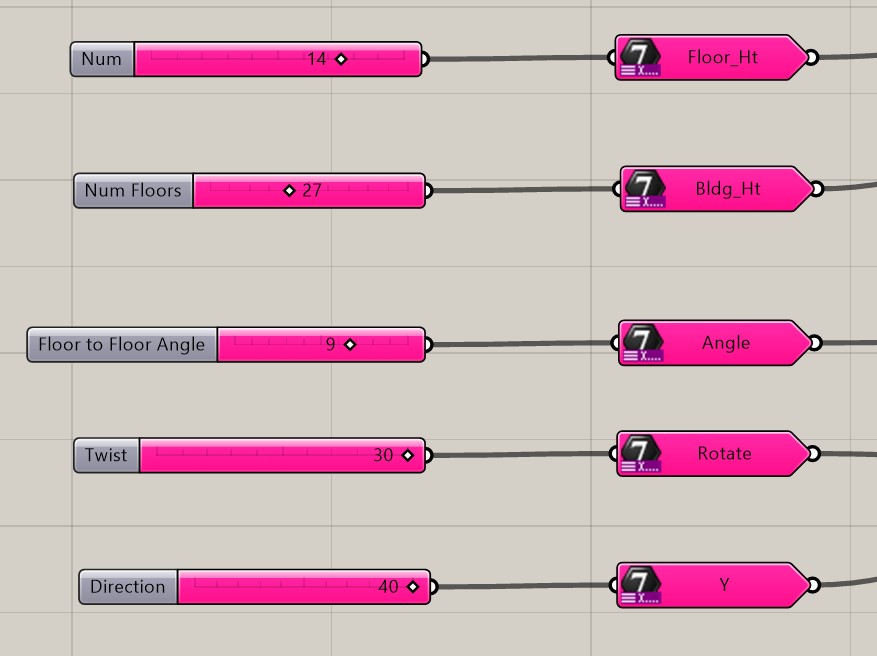Isovist analysis offers a way of geometrically describing the spaces and forms of a building which can be seen from a particular position. As such, it combines a consideration of both fixed, building-related factors, such as space and form, and temporal, experiential ones, such as visibility and the impact of movement. Isovists are part of a larger field of study known as visibility analysis, which is concerned with quantifying the relationship between vision and behavior.
APP FUNCTION
To analyze how much amount of views a particular massing can get with respect to its surrounding site context.
USER INPUTS
Form
For this app to work the building in its simplest 2D form has to be referenced inside grasshopper, from which the floorplates can be individually extruded.

For this case example an ellipse has been chosen as the simplest 2D form which would in turn transform into an elliptical building.

Parameters like floor-to-floor height, total height of the building, floor to floor rotation, entire building rotation and movement of the building along a particular axis can be set inside grasshopper to arrive a final form of the building with maximum views.
Site Context
The site model can be referenced inside grasshopper which provides the context as to the structures which are blocking the views to the building.
RESULT
- Gives you the maximum amount of views for a particular design iteration.
- Percentage of views below 20%
- Percentage of views above 60%
This allows designers to make informed decisions on final form of the building with more views coming into the building.

GH

Presentation

